
Start Here
Start Your Journey Here
Expereinces & Activities

Start Here
Start Your Journey Here
Expereinces & Activities
Our Destinations
Safaris and Tours
Our Impact
Wildebeest Calving in Ndutu and Serengeti Tanzania
Home » The Great Wildebeest Migration » Wildebeest Calving Season
Discover the Wildebeest Calving in Tanzania
Have you ever considered how 2 million wildebeests migrate from the South to the North of the Serengeti and back? The wildebeest calving phenomenon is astonishing, with over 8,000 calves born during each season, amounting to around 500,000+ calves.
These numbers continuously rise with each Wildebeest Calving Season from January to March annually. Following the November rains, the southern plains of the Serengeti become vibrant and green, supplying the fresh grazing that wildebeests need during their energy-intensive calving period: several hundred thousand wildebeests are on the verge of giving birth, resulting in a bustling time.
During this calving season, approximately 500,000 wildebeest calves are welcomed into the world within just a few weeks; more than 8,000 calves can be born in a single day. This synchronized birthing strategy serves as a survival mechanism; by flooding the area with a large number of calves, the chances of any individual calf being captured by predators are reduced. This period is vital for the species’ survival, as it ensures the herd’s replenishment.
Witnessing the birth of a wildebeest calf is a safari experience like no other. Wildebeests give birth while standing, and just minutes after delivery, the calves are on their feet—wobbly yet determined. This rapid development is crucial, as they need to be ready to move with the herd almost immediately to avoid becoming prey.
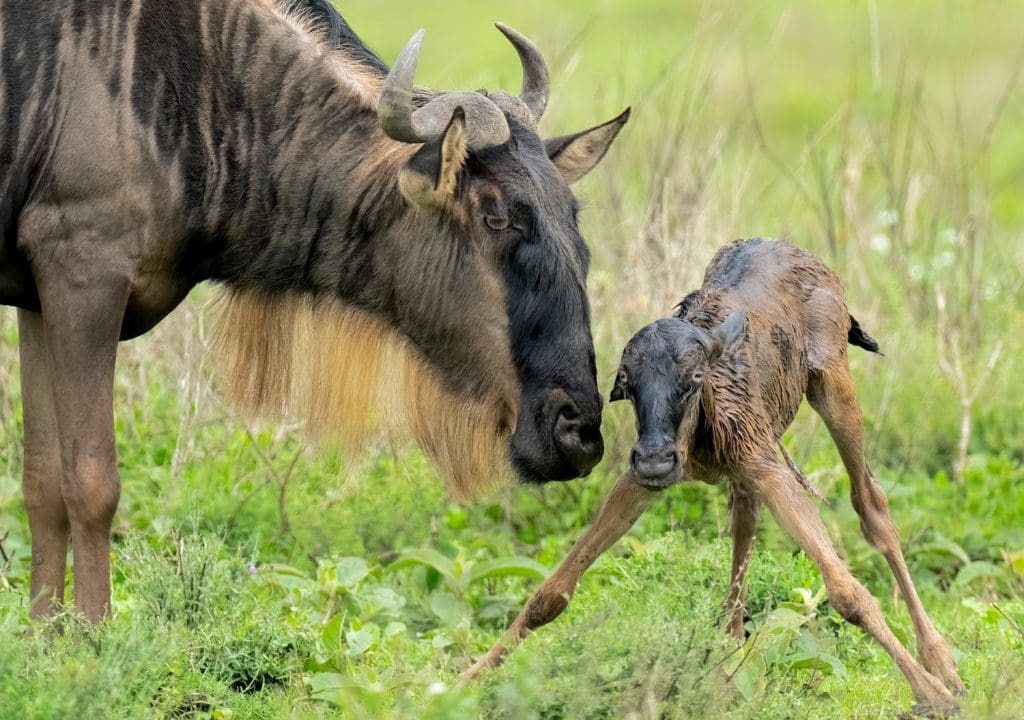
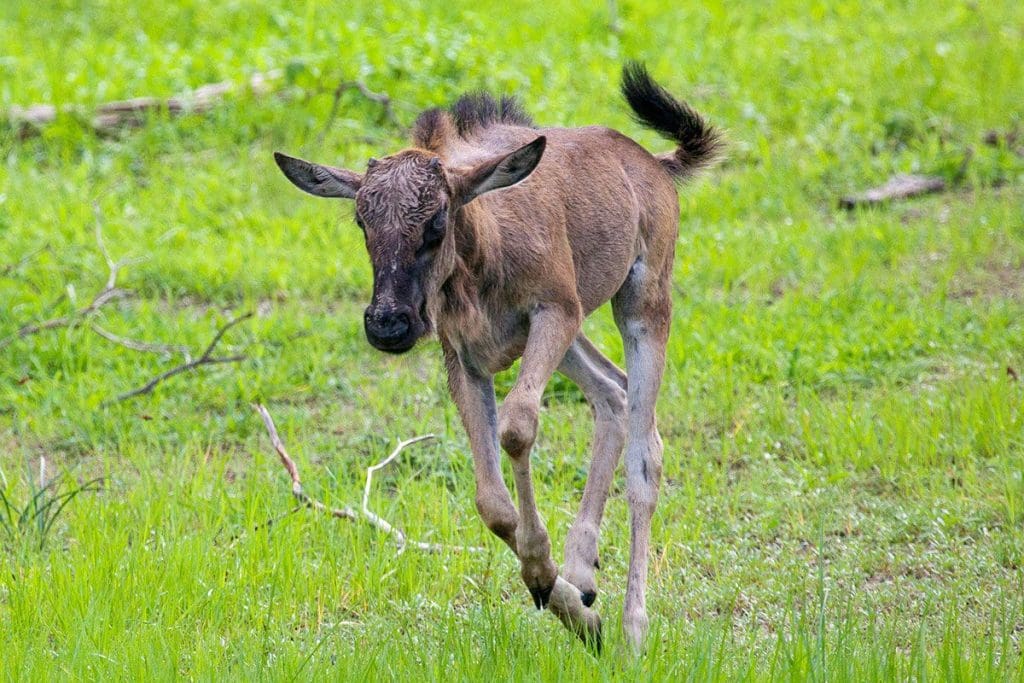
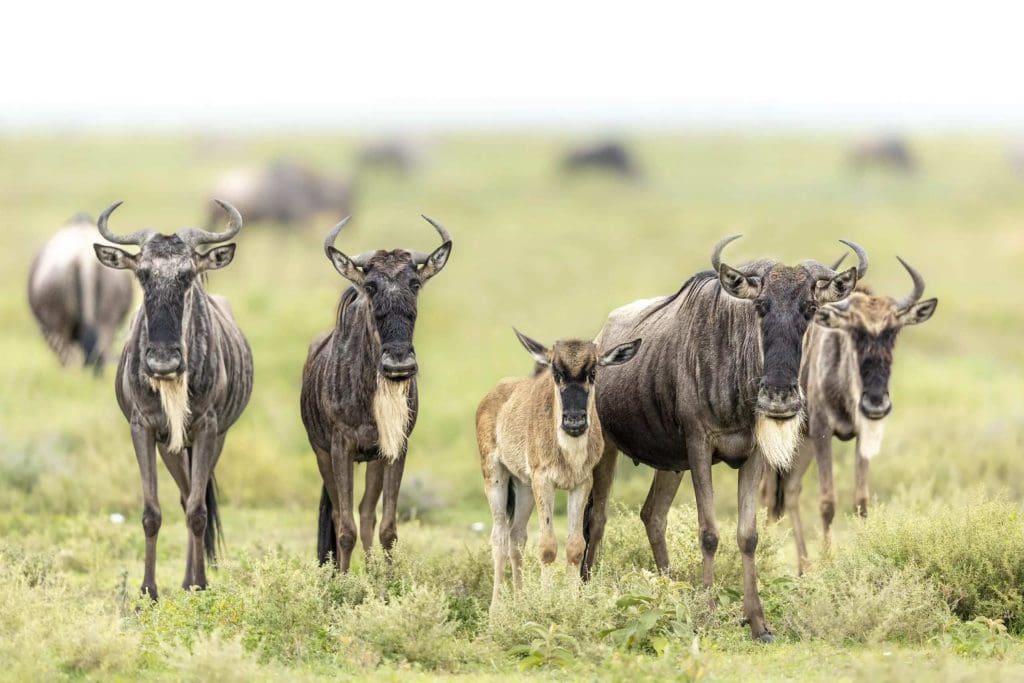
Where do the wildebeest calving happen in Tanzania?
The most common places where the wildebeest calving happens are the Serengeti National Park and Ndutu Conservation Area. A little bit of it is witnessed in the larger Ngorongoro Conservation Area. These are the best and most conducive places where the wildebeest find it perfect to give birth to more than 500,000+ wildebeest calves.
The Southern Serengeti, which borders the Ngorongoro and Ndutu Conservation Areas, is where the Calving Season specifically occurs. These areas get plenty of rain from January to March, which makes them ideal for giving birth to wildebeest calves.
Following a strenuous and perilous trek north, the wildebeests head back south in search of water, richer pastures, and to complete their biological duty of giving birth. When the wildebeest migration reaches Ndutu and the Southern Serengeti, about 80% of them are pregnant. They will have about six months before giving birth after migrating to the Maasai Mara and northern Serengeti, which offer a favorable breeding environment.
Ndutu Conservation Area is located well within the Ngorongoro Conservation Area but right on the doorstep...
Serengeti National Park is home to millions of wildlife and bird species. This includes the many...
Ngorongoro Conservation Area: Tanzania’s Ngorongoro Crater is widely regarded as one of the most stunning spectacles...
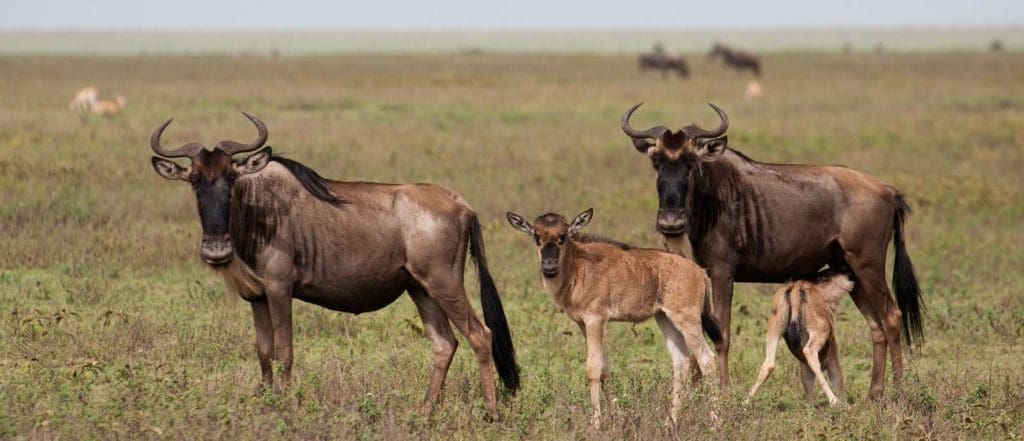
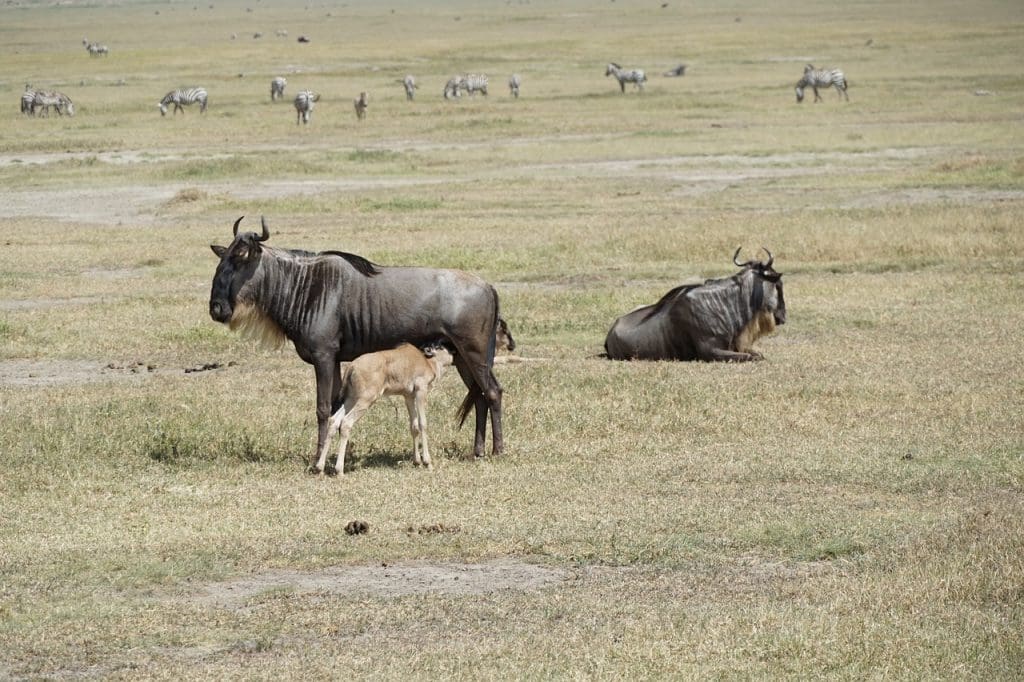
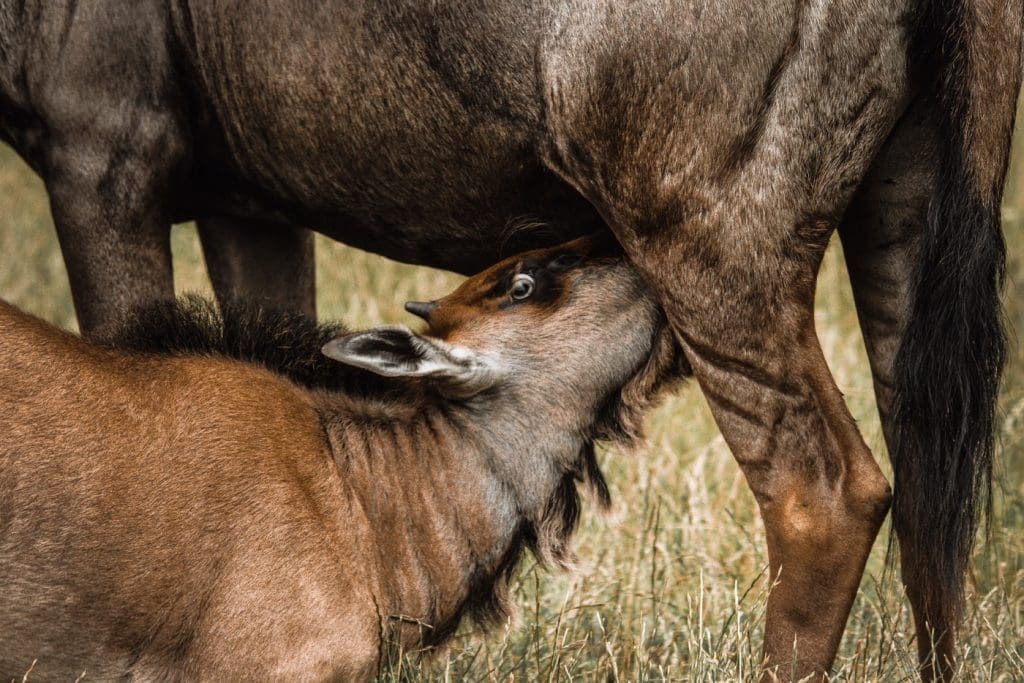
What season is best for calving?
Generally, Kenya & Tanzania are best to visit in the dry-season months of July – October when the parks are dry and wildebeest herds are in plenty, viewing is dramatic, easy and action packed.
1st April to June 15th and 15th Nov to 15th Dec
During this Season, the herds are in Central & North Serengeti in April to June. The grass are tall and better time to spend with them.
In Nov, they wll have Migrated from the Masai Mara down back to the Serengeti National Park.
Jan 10th to 1st April and 1st Nov to 15th Dec
The best time to witness the calving of wildebeest calves in the Southern Serengeti. Ndutu Conservation area offers the best ground for calving of more than 8000+ Calves.
In April, they start moving up to Northern serengeti, and in Nov, they start moving down to Serengeti from Masai Mara.
15th June to 30th Oct, 15th Dec to 10th Jan
These are the best month to witness the dramatic migration and crossings in Serengeti and Masai mara with over 1.5 Million wildebeests crossing the Mara River.
It’s easier to spot them in Masai Mara Kenya and Northern Serengeti in Tanzania.
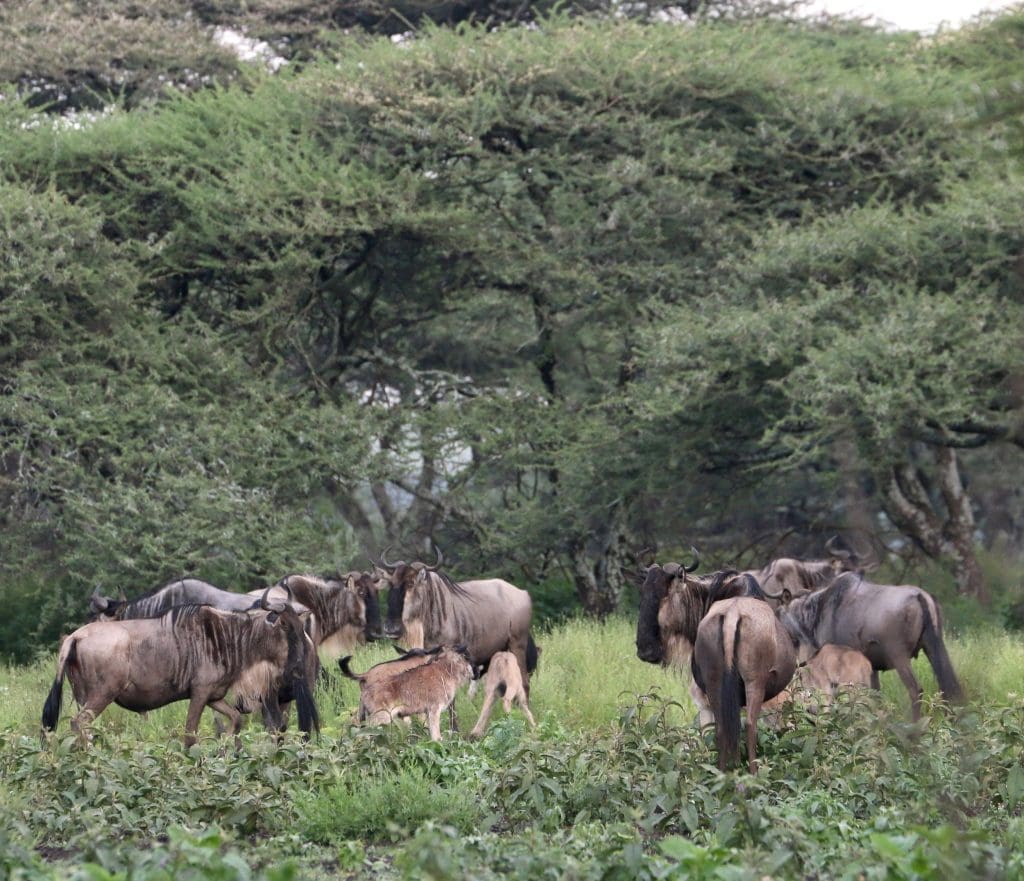
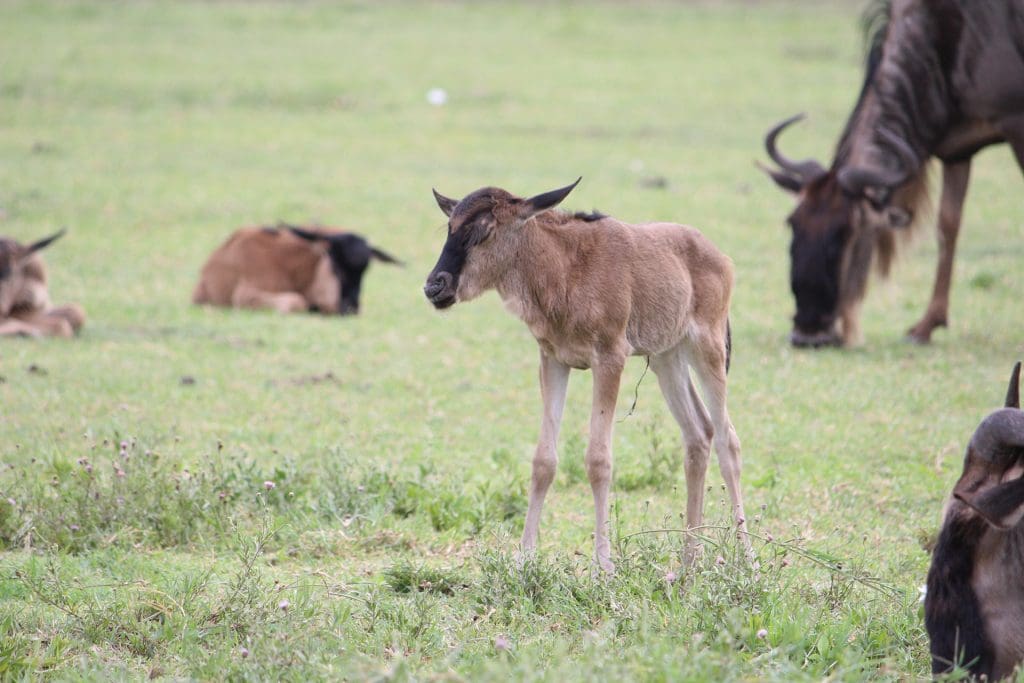
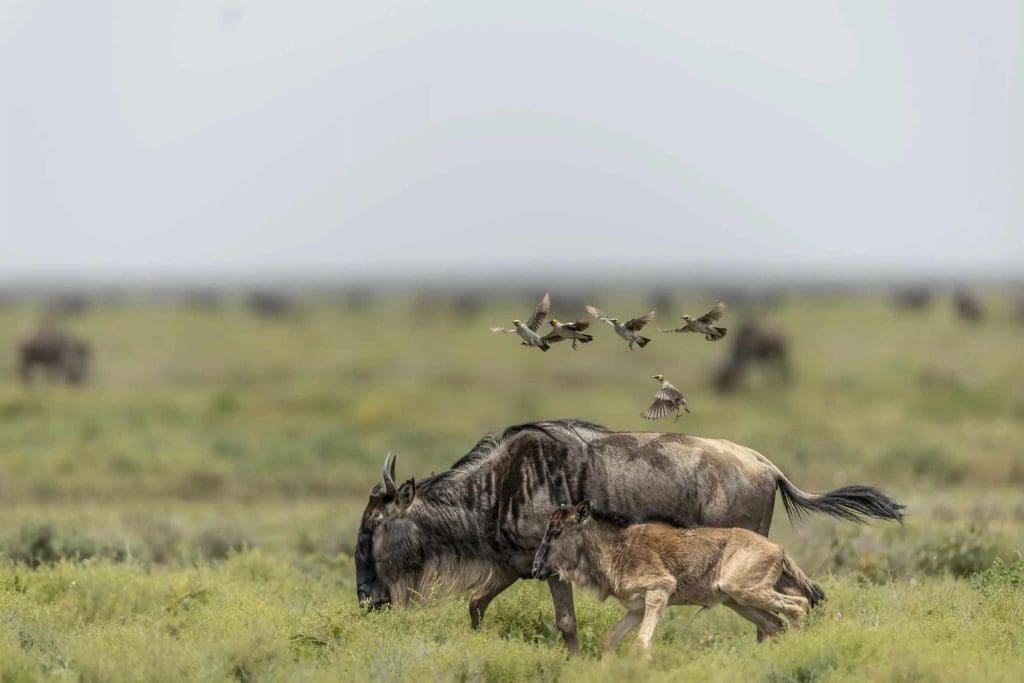
Pack For a Purpose
Cheetah Safaris is a serious advocate of sustainable safari practices in Africa. As part of our efforts and initiative, we engage and support schools and children who need knowledge to better their lives. The best gift a child can be given is education, skills, and creativity.
In this case, we request our guests booking with us, to bring an extra back of supplies. This can be in terms of books, sports materials, and any other items that would change the lives of these kids.
Let us help you customize your trip
Like all of our holidays on this site, this is just an idea. All of our trips are tailor-made, so we’ll always adapt them to suit you.
Talk to an Expert
Browse our Cheetah Safaris Website. We’ll match you with a Specialist in our team who is best suited to help you plan your next safari adventure. To start, submit your Safari Inquiries.
Prepare for your trip
Our Safari experts will be of help in planning your safari from start to end. They will advise you on all that you need to pack and travel documents, too. They will be ready to answer any queries you have.
When you return
We would love to hear from you about your trip with us. Your feedback will help us always work better and try to be the best. You can leave your review on our Reviews Page or TripAdvisor Page.
This website uses cookies to ensure you get the best experience on our website. Visit our Cookie Policy.